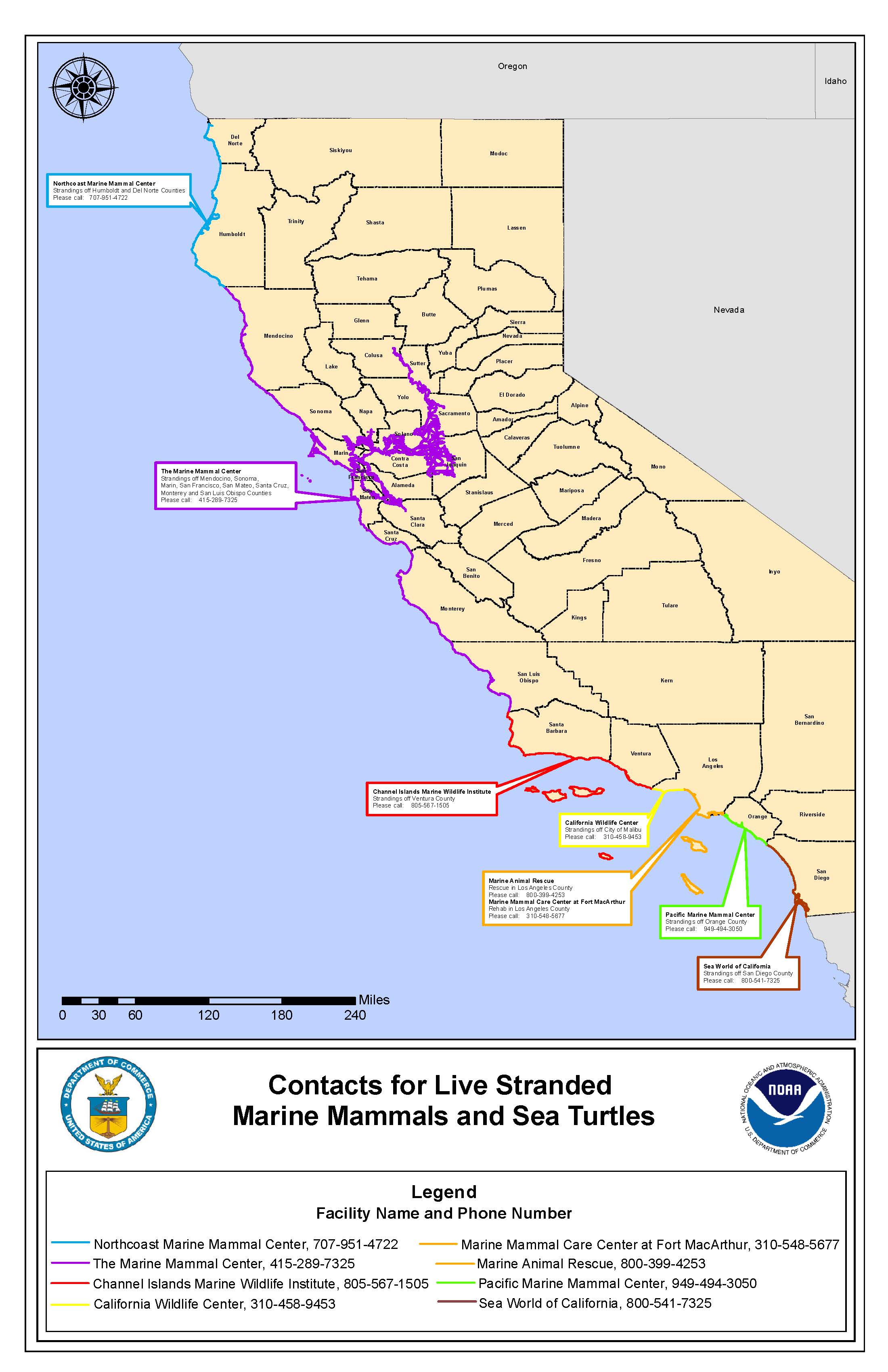Pseudo-nitzschia - C-HARM tells us where conditions are suitable for Pseudo-nitzschia spp. (all size classes) to grow well and where they might be more likely to produce domoic acid (DA). While the monthly mean for C-HARM continues to indicate conditions rife for Pseudo-nitzschia growth along most of the California coast, particularly in offshore regions from the Santa Barbara Channel north, things were actually fairly quiescent in December at most piers where HABMAP sampling took place. These pier samples show very low cell abundances for both size classes of Pseudo-nitzschia. A nearshore upwelling event appears to have taken place in late December at HABMAP stations where nutrient data have already been recorded. For instance, from Cal Poly Pier and Stearns Wharf, there is an abrupt spike in nutrients at the end of December, with chlorophyll not quite following suit. The Scripps Pier record for Pseudo-nitzschia suggests that jumps in chlorophyll in late December or early January could have been a result of this nutrient pulse and were comprised, in part, of the smaller (less toxigenic) size class of Pseudo-nitzschia. CDPH samples show elevated Pseudo-nitzschia spp. relative abundance near Stearns Wharf in Santa Barbara, around the Santa Barbara Channel Islands, near Los Angeles, and Scripps Pier in San Diego.
Domoic Acid - C-HARM also tells us where DA might be more likely. Probabilities are high in the month of December in the very coastal region of the North Coast, near the mouth of San Francisco Bay, and offshore for most of the central CA coast and throughout the Southern California Bight. Cellular DA probabilities are most elevated offshore of central CA and throughout the Santa Barbara Channel. The high pDA probabilities in the nearshore zone of northern California are supported by the delayed opening of the commercial Dungeness crab fishery, first due to low meat quality, and later in the month, due to elevated DA levels. HABMAP observations of DA for the month of December show very low to nonexistent DA in the nearshore zone at sites where DA was reported. This is inconsistent with the C-HARM predictions, however the three new sea lion strandings in December were from the central coast region, which is consistent with elevated offshore probabilities for pDA and cDA by C-HARM.
Alexandrium - HABMAP records for Alexandrium indicate no activity in December, except at Cal Poly Pier in early December, consistent with CDPH sampling showing a slight increase at that site.
Mean Probability of Pseudo-nitzschia Bloom for Dec. 2018
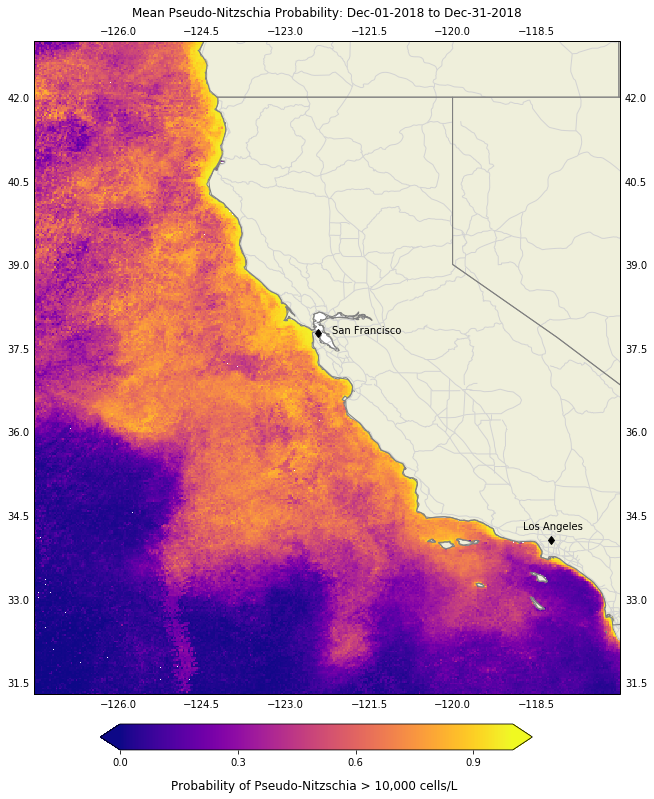
Mean Probability of Particulate Domoic Acid for Dec. 2018
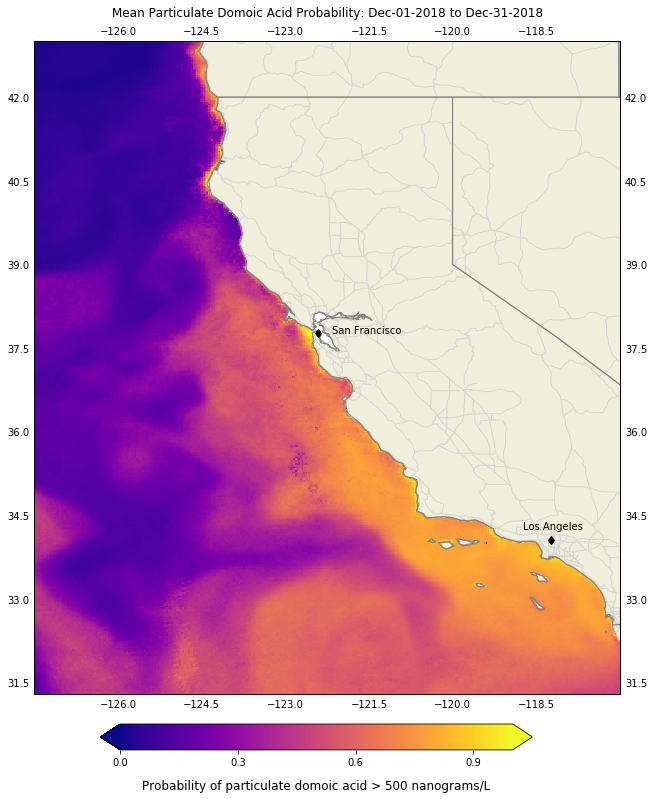
Mean Probability of Cellular Domoic Acid for Dec. 2018
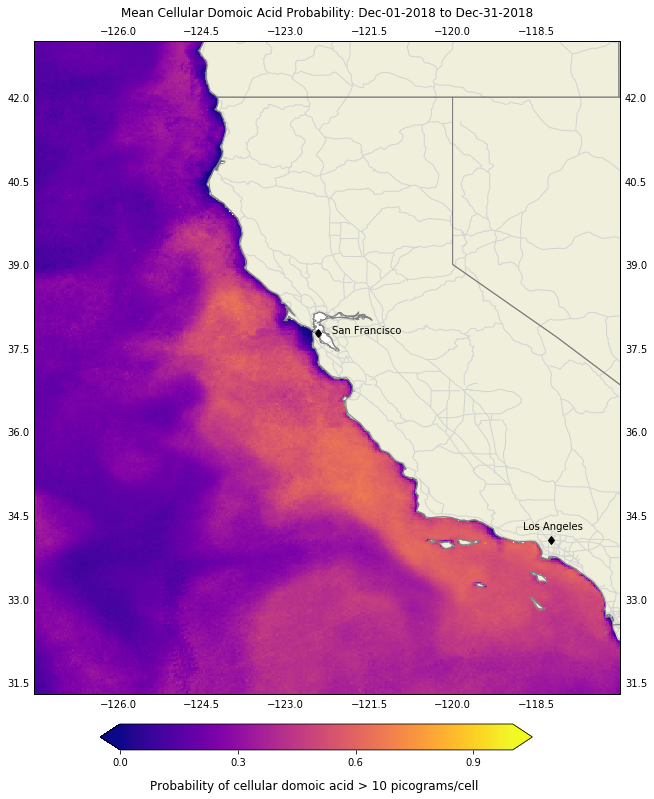
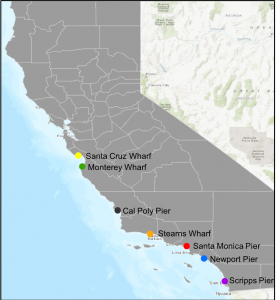
HABMAP Monitoring Sites
Note that data for some stations are not shown because they are not yet recorded in the public HABMAP archive, e.g. Monterey Wharf data are not publicly available at this time as they undergo a rigorous quality control analysis.
Differentiating Pseudo-nitzschia species by light microscopy is difficult. For this reason, Pseudo-nitzschia "seriata" does not refer to an actual species but rather the larger size class of Pseudo-nitzschia, which is generally a more toxigenic group of species. Alternatively, Pseudo-nitzschia "delicatissima" refers to the smaller size class that is generally non-toxigenic. The dashed line on the plots demarcates the 10,000 cells/L "bloom" threshold designated here for Pseudo-nitzschia populations only.
Santa Cruz Municipal Wharf
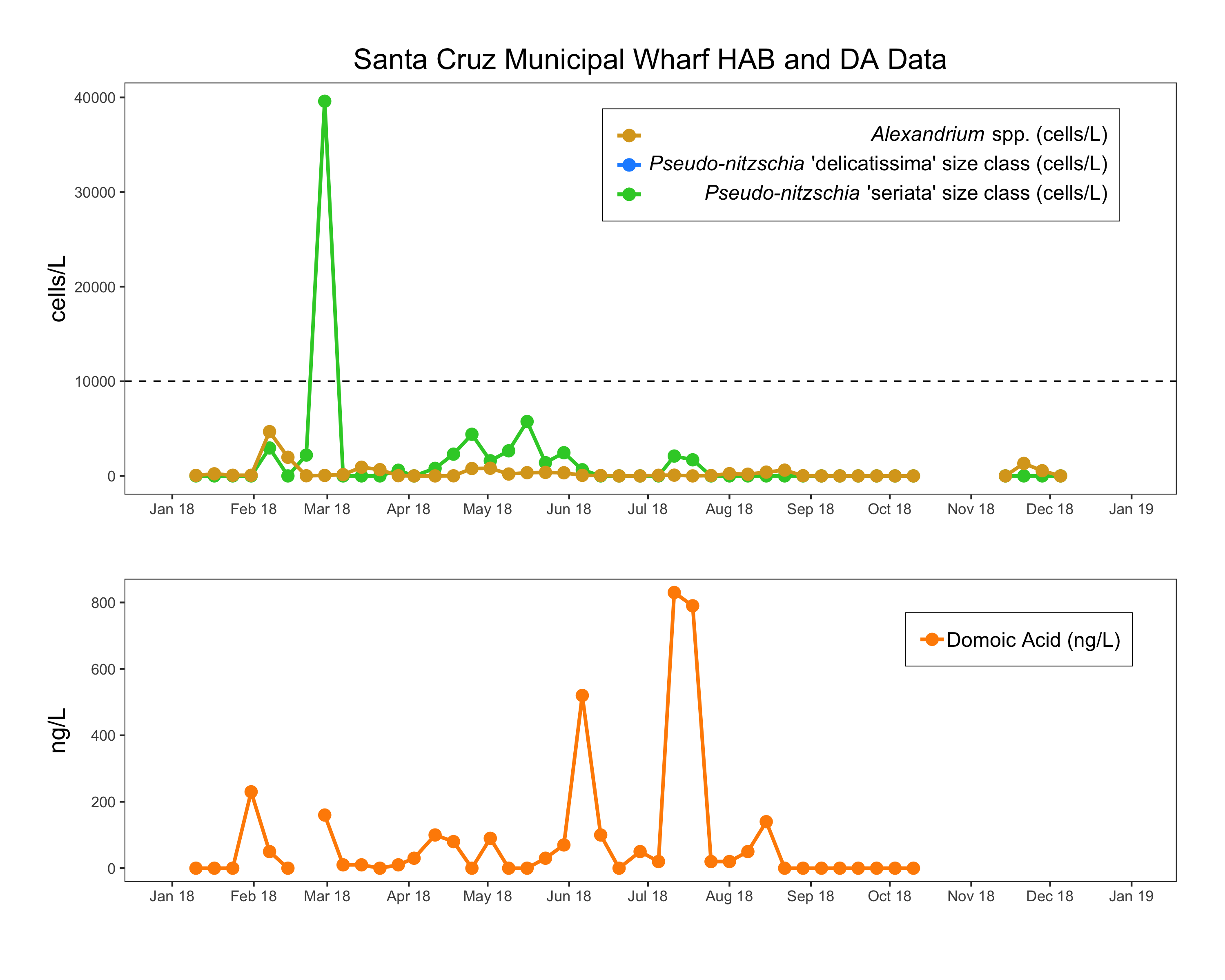
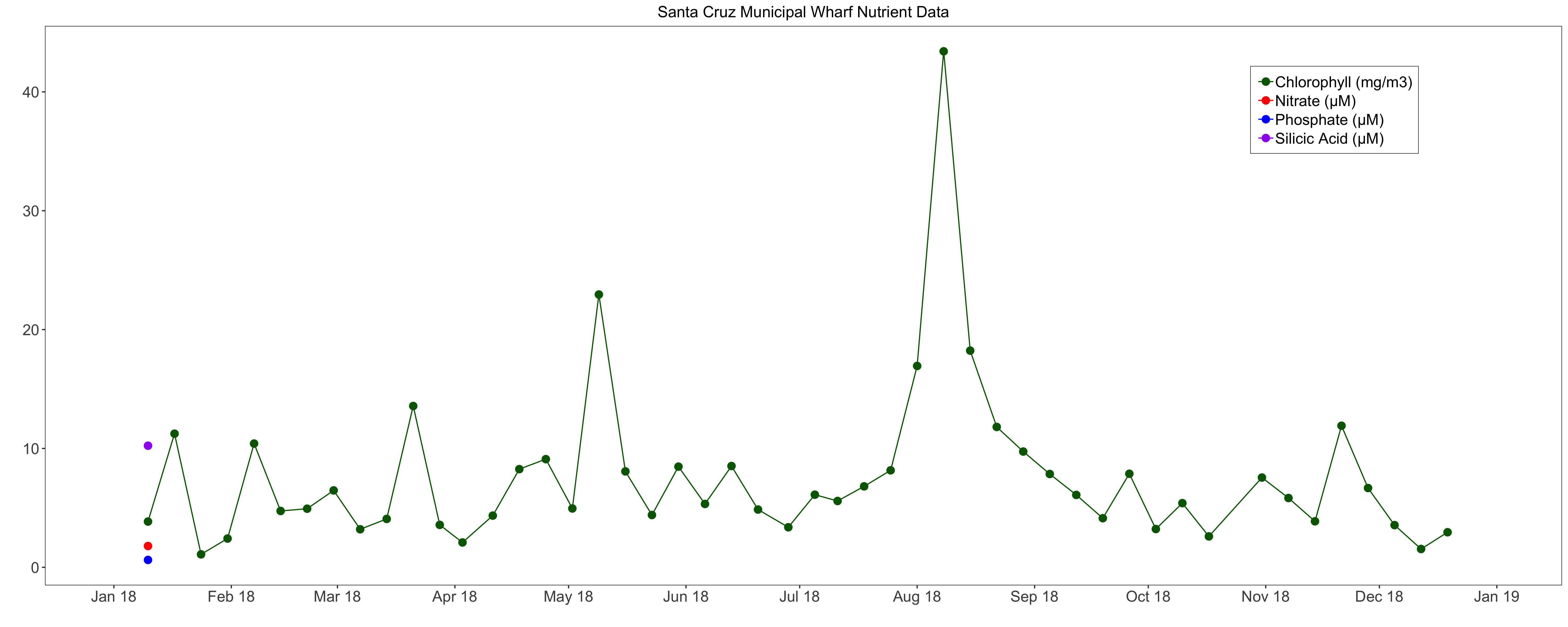
Cal Poly Pier
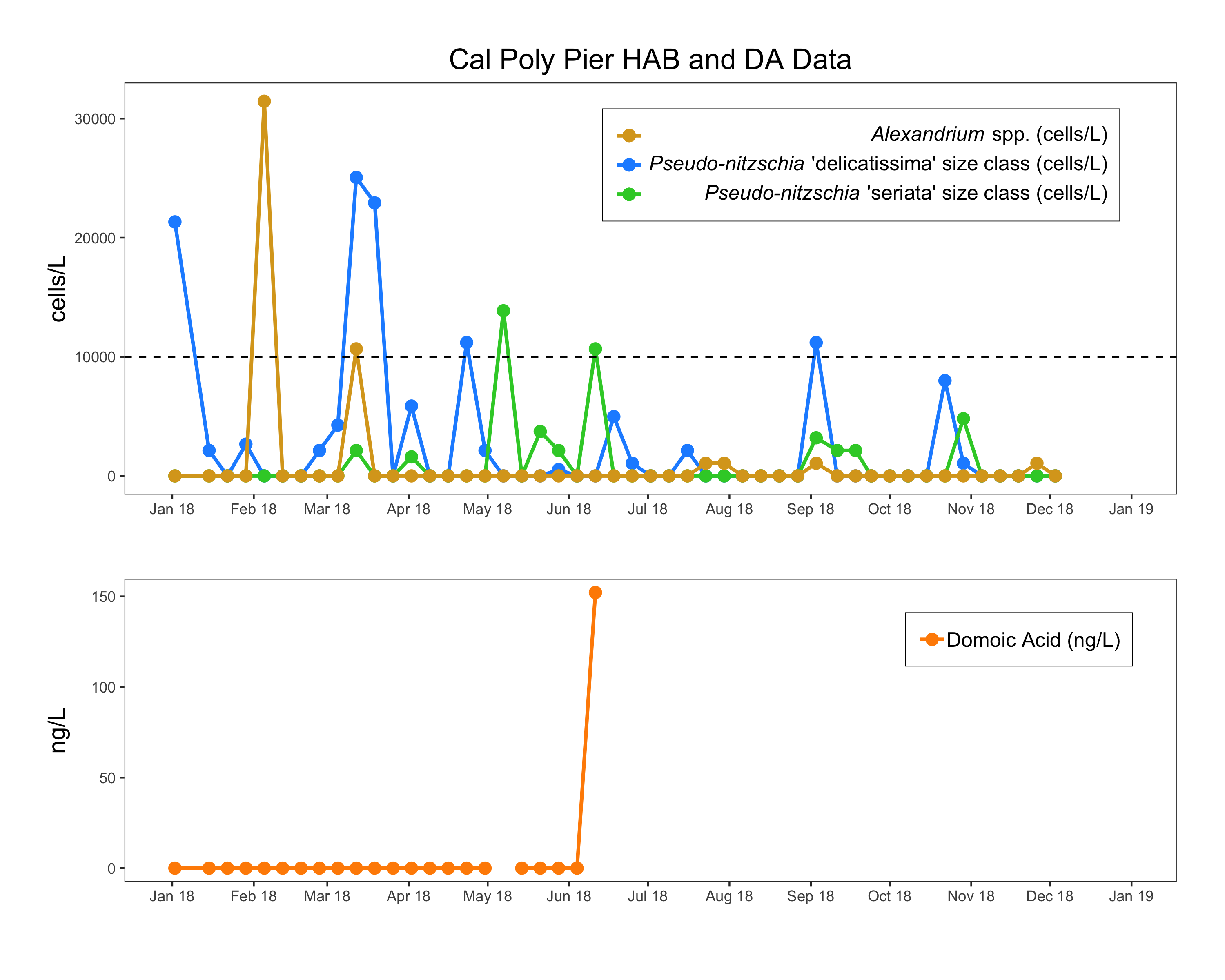
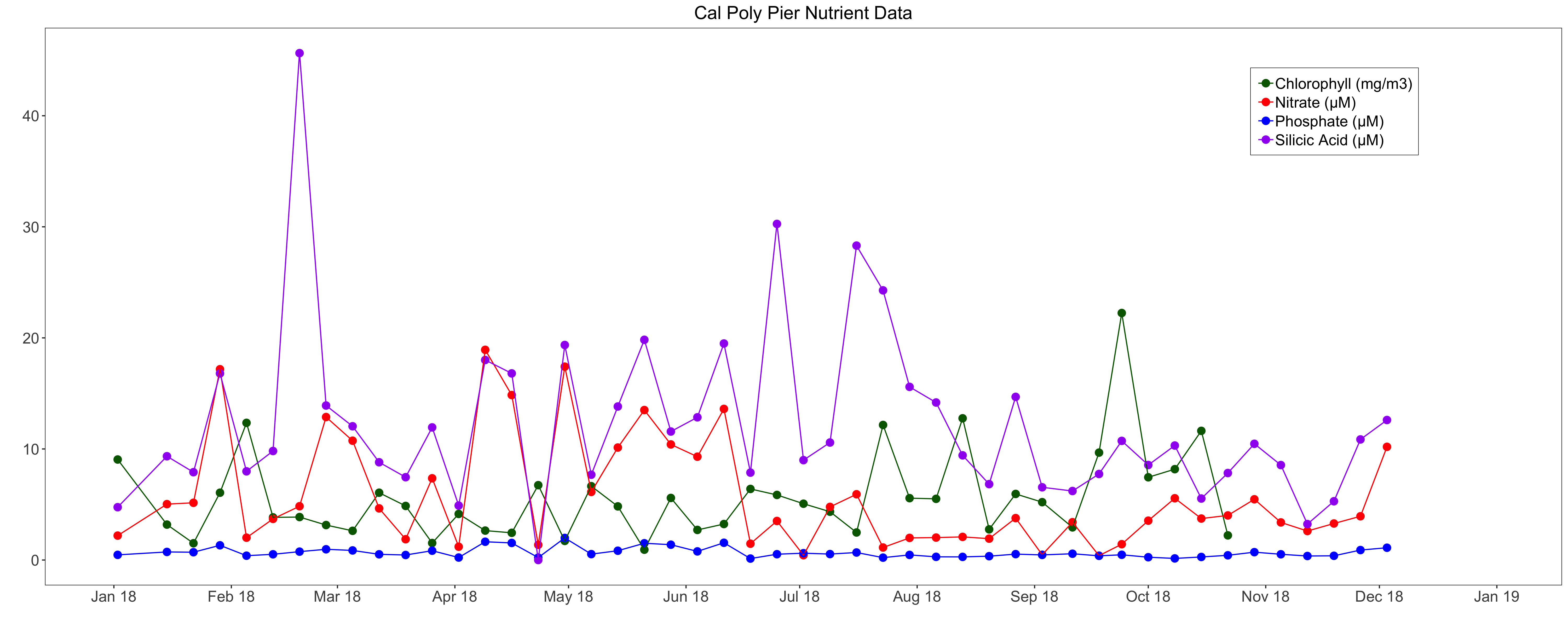
Stearns Wharf
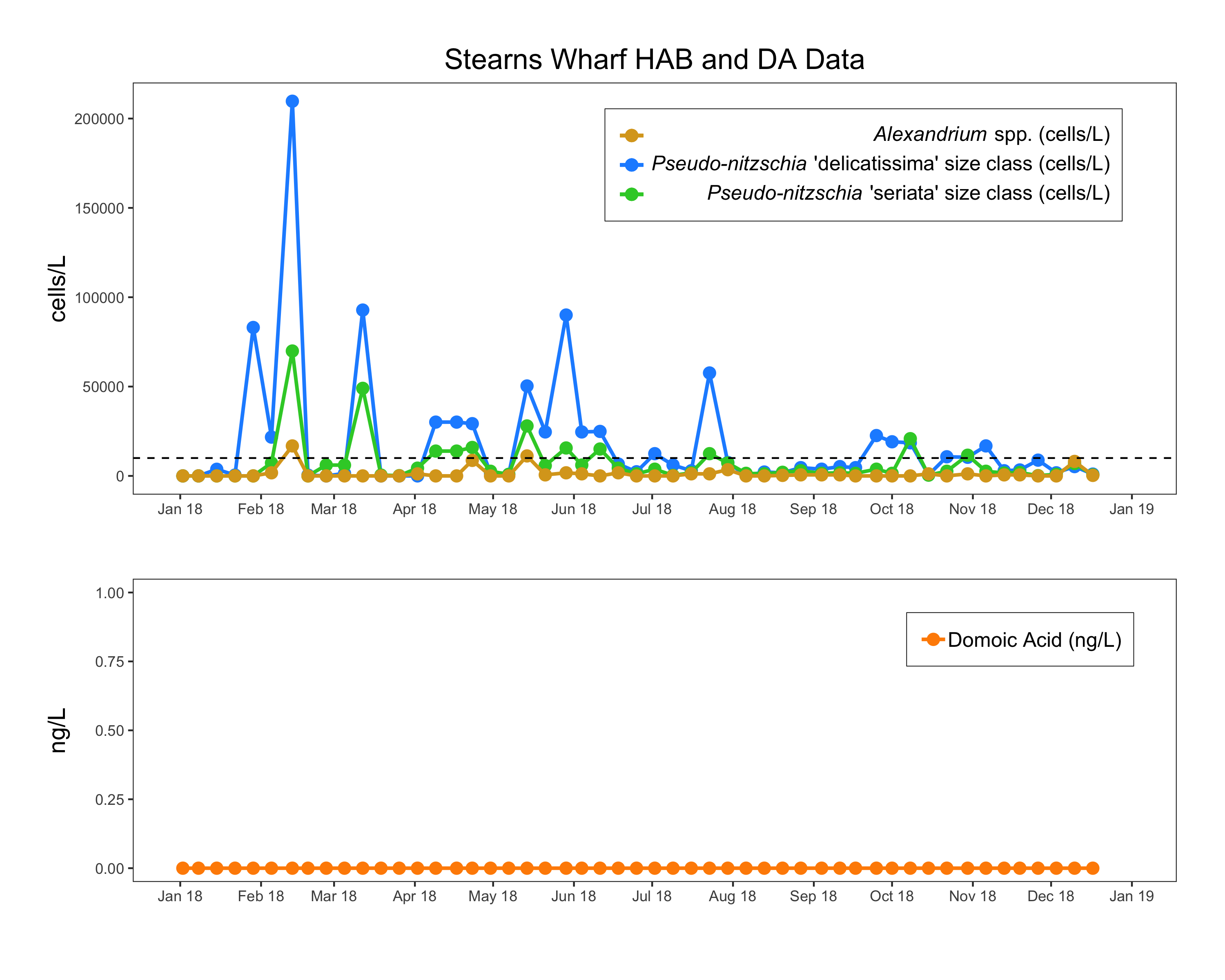
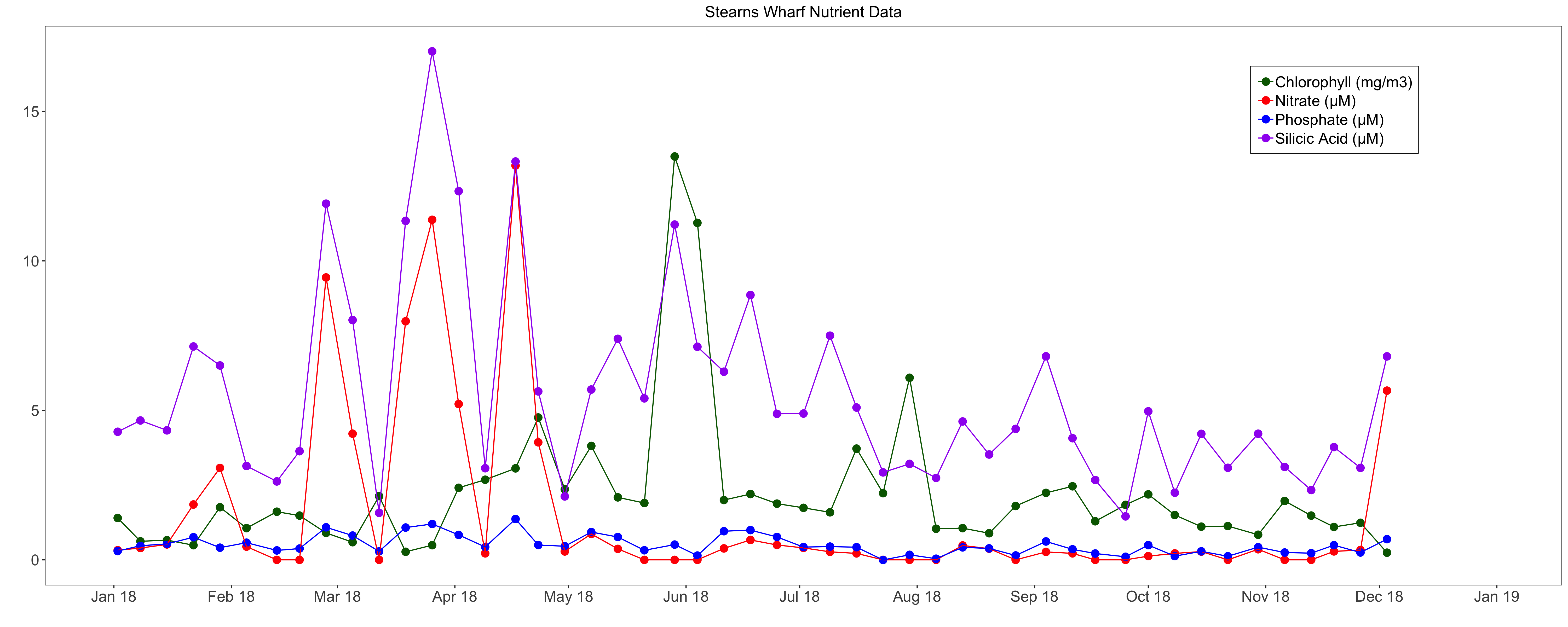
Santa Monica Pier
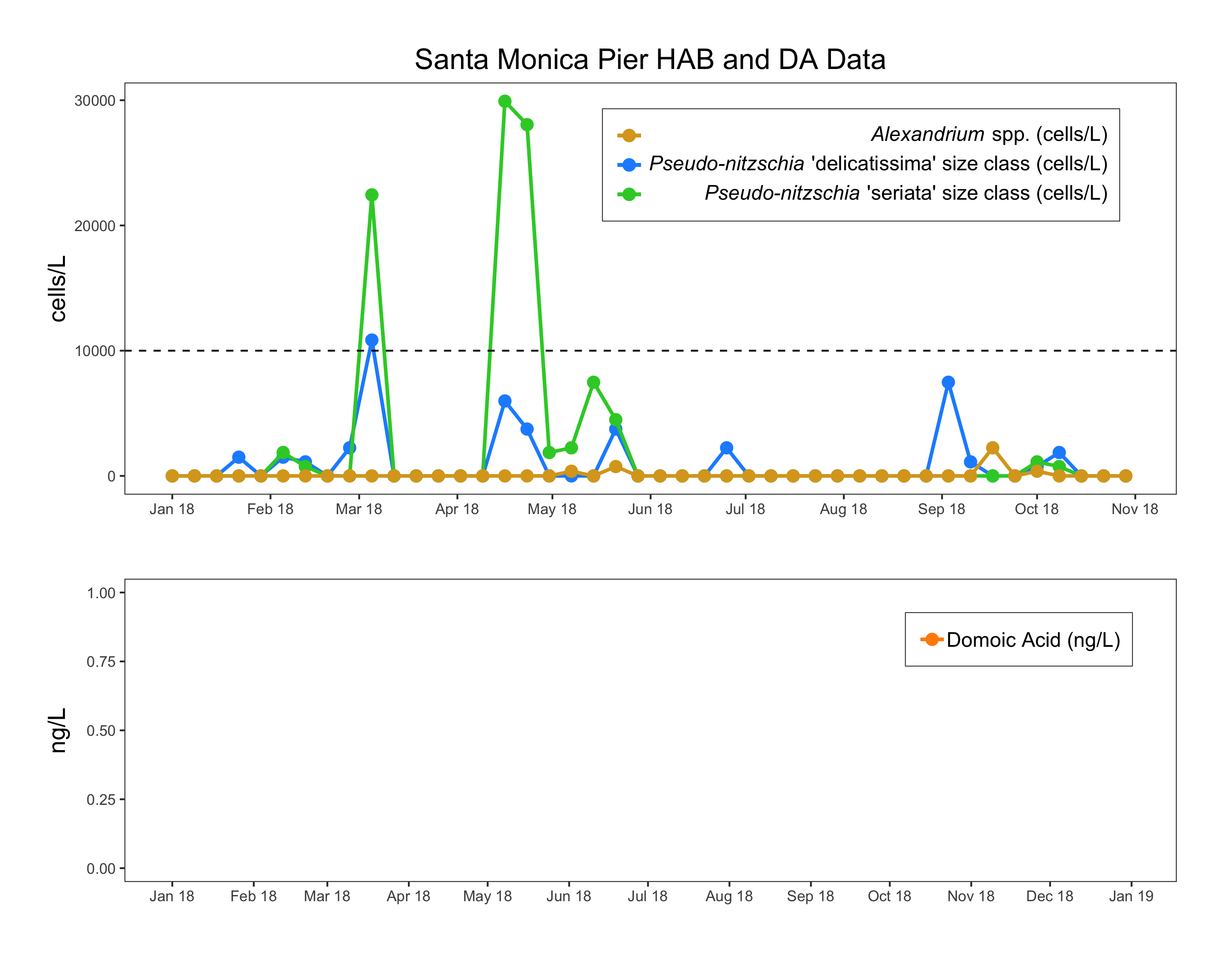
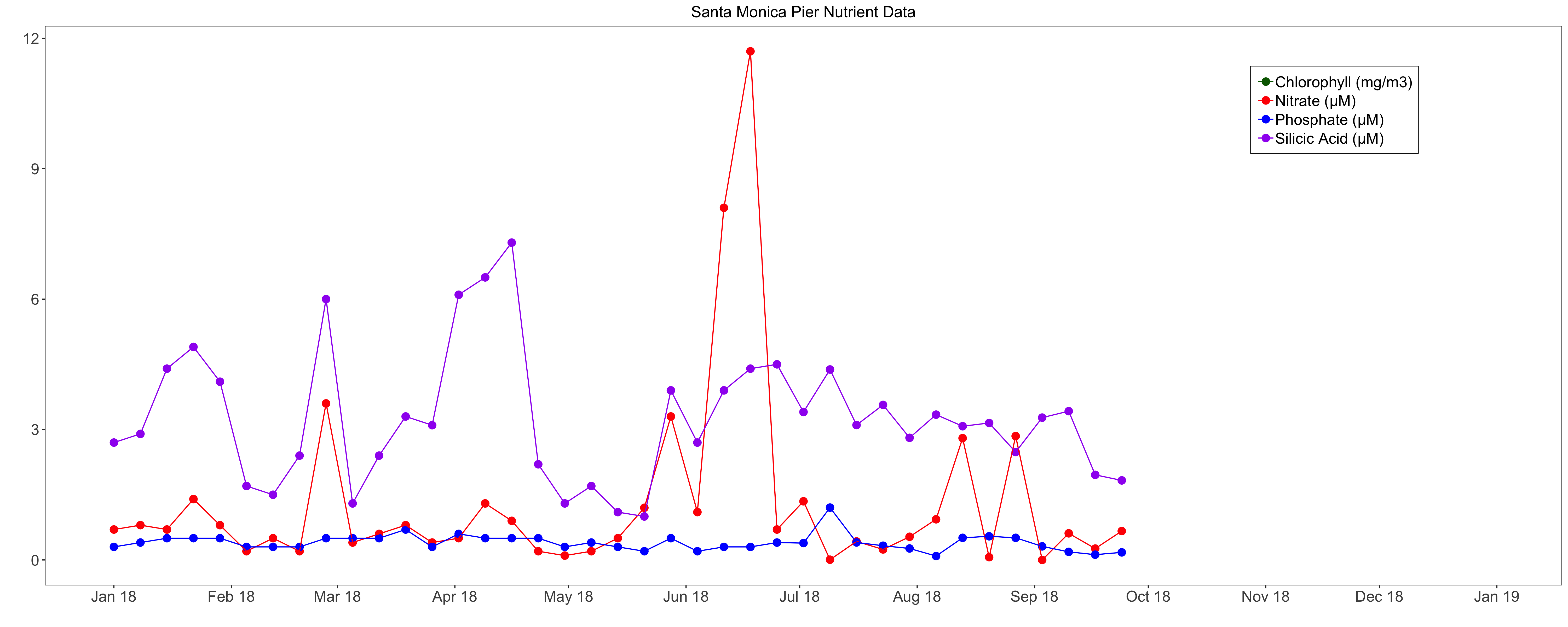
Newport Beach Pier
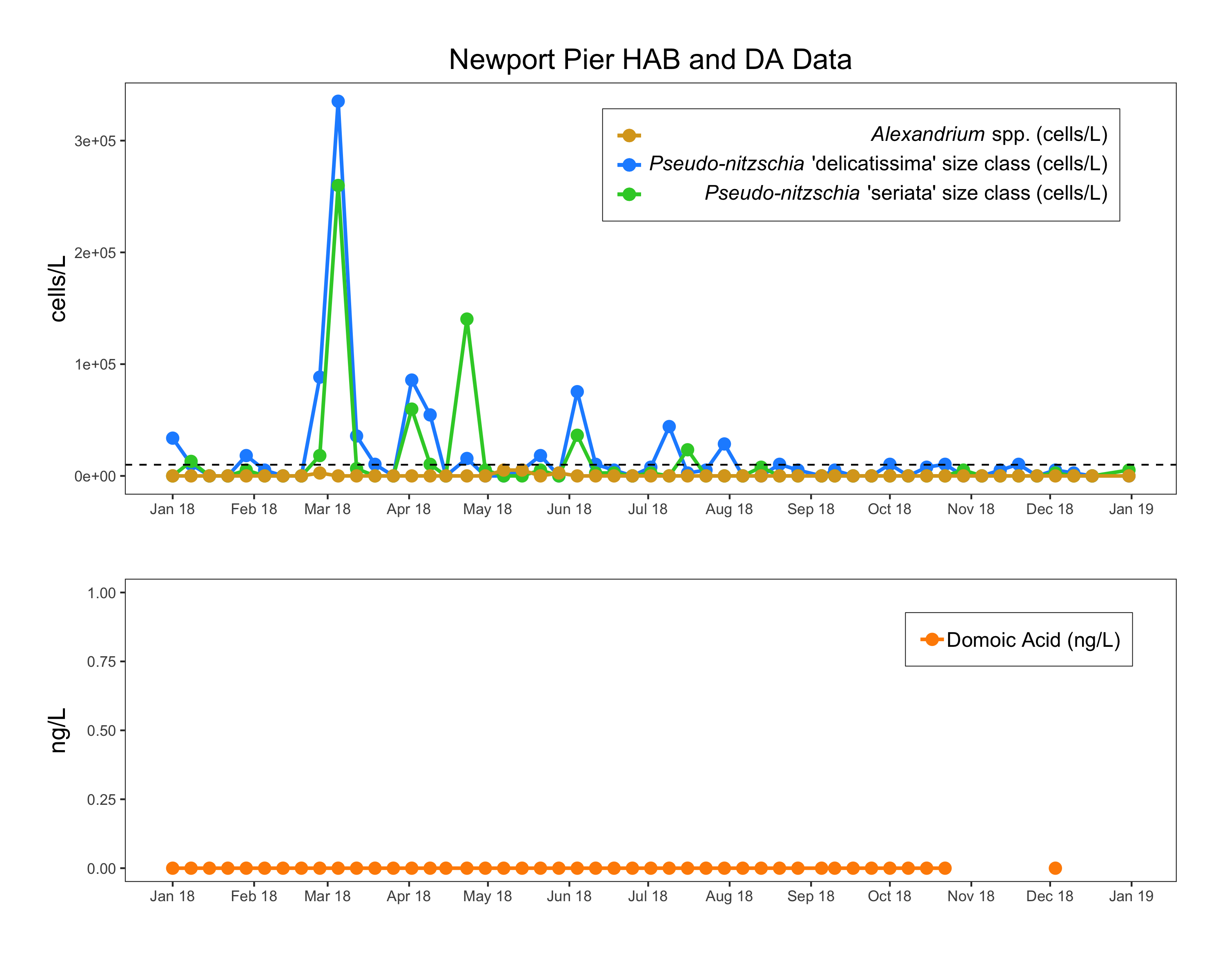
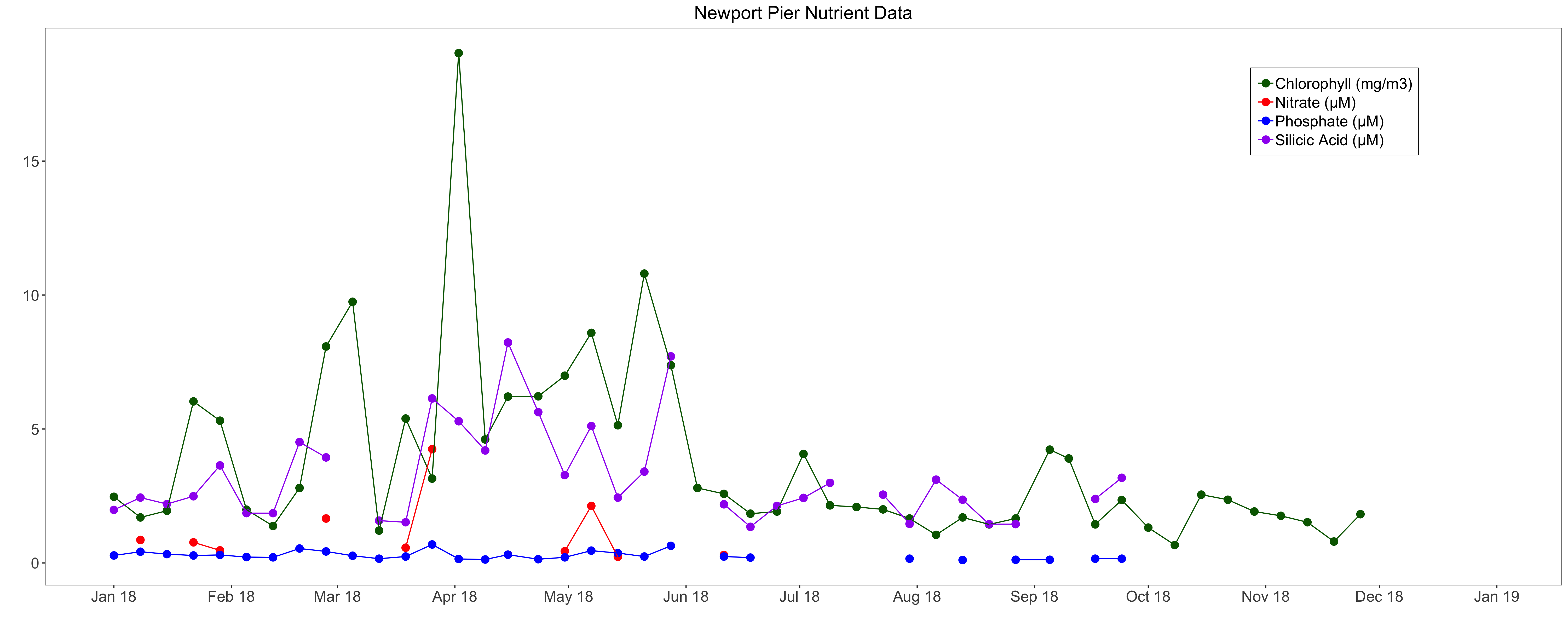
Scripps Pier
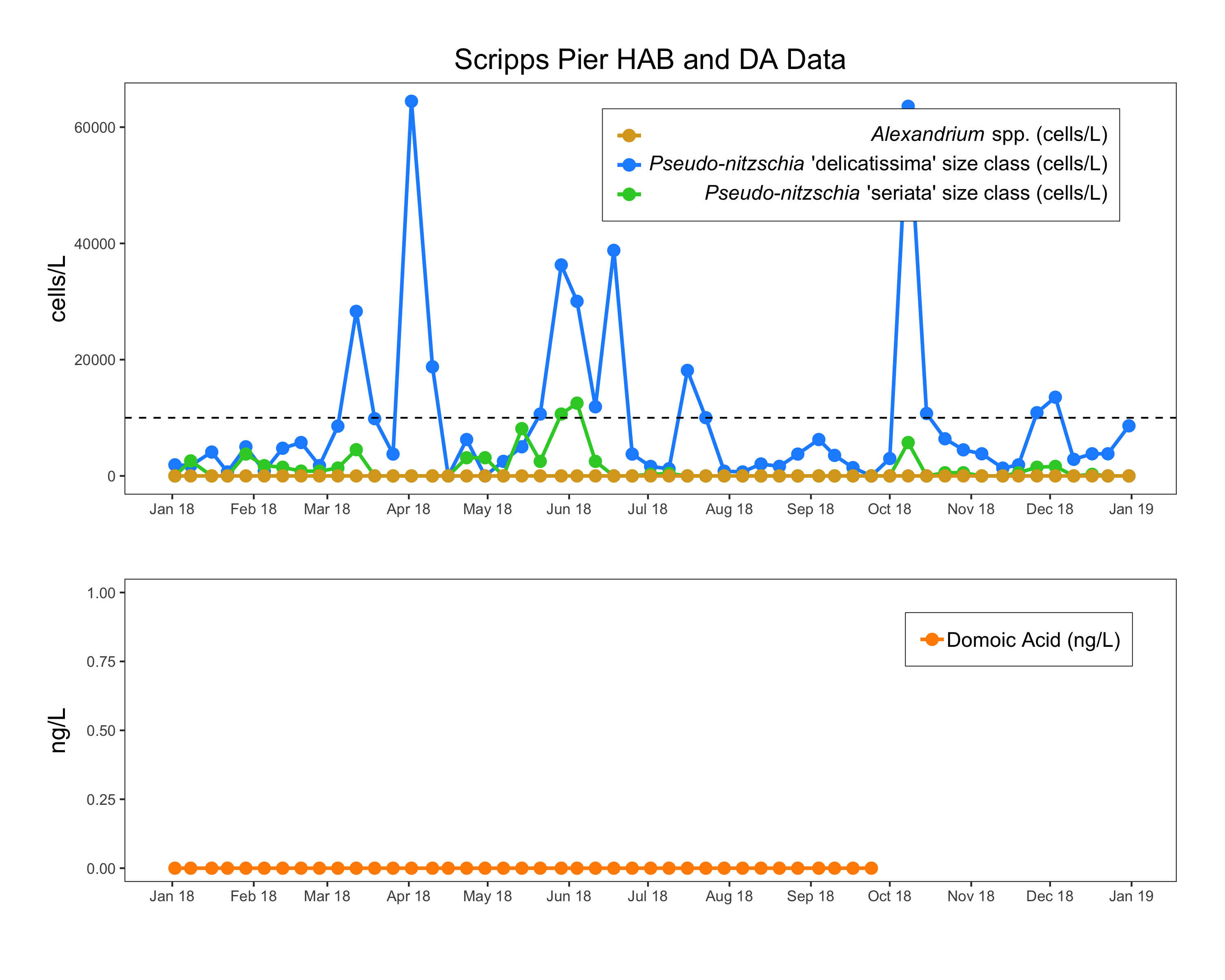
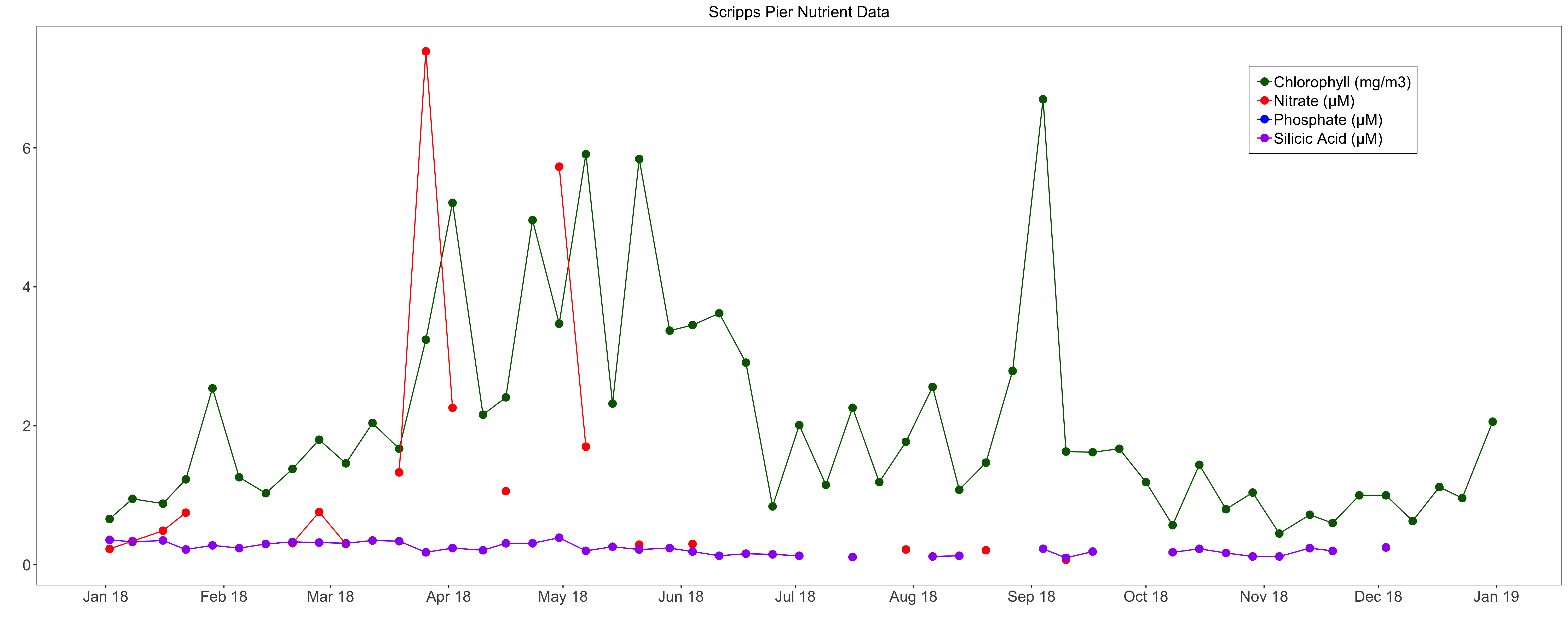
CDPH observations for Pseudo-nitzschia spp. and Alexandrium spp.
From 1-31 December 2018, water samples were collected by volunteers and sent to the California Department of Public Health (CDPH) for analysis. Pseudo-nitzschia spp. were detected in 29 of the 87 samples. Percent composition of Pseudo-nitzschia spp. were greatest on December 4th at Goleta Pier (10% percent composition) and December 7th at Mohawk Reef (10% percent composition). Alexandrium spp. were detected at low levels (<1%) in 3 of the 31 sites sampled. You can also view CDPH weekly map layers of Pseudo-nitzschia and Alexandrium here.
Note the annual recreational mussel quarantine is no longer in effect. On Dec 3, CDPH lifted the health advisory from early November not to eat Dungeness crab viscera in state waters near Bodega Head and Russian River in Sonoma County due to domoic acid (threat of Amnesic Shellfish Poisoning). Throughout November and December, delays in the commercial Dungeness crab fishery opener occurred, first due to meat quality, and later in December, due to high DA. The second delay was issued for the area from Patrick’s Point, Humboldt County north to the California/Oregon state border.
For the latest closures and updates, please visit the California Department of Fish and Wildlife (CDFW) Health Advisories page. Data are provided by the California Department of Public Health, Environmental Management Branch.
December 2018
Pseudo-nitzschia spp.
Percent Composition
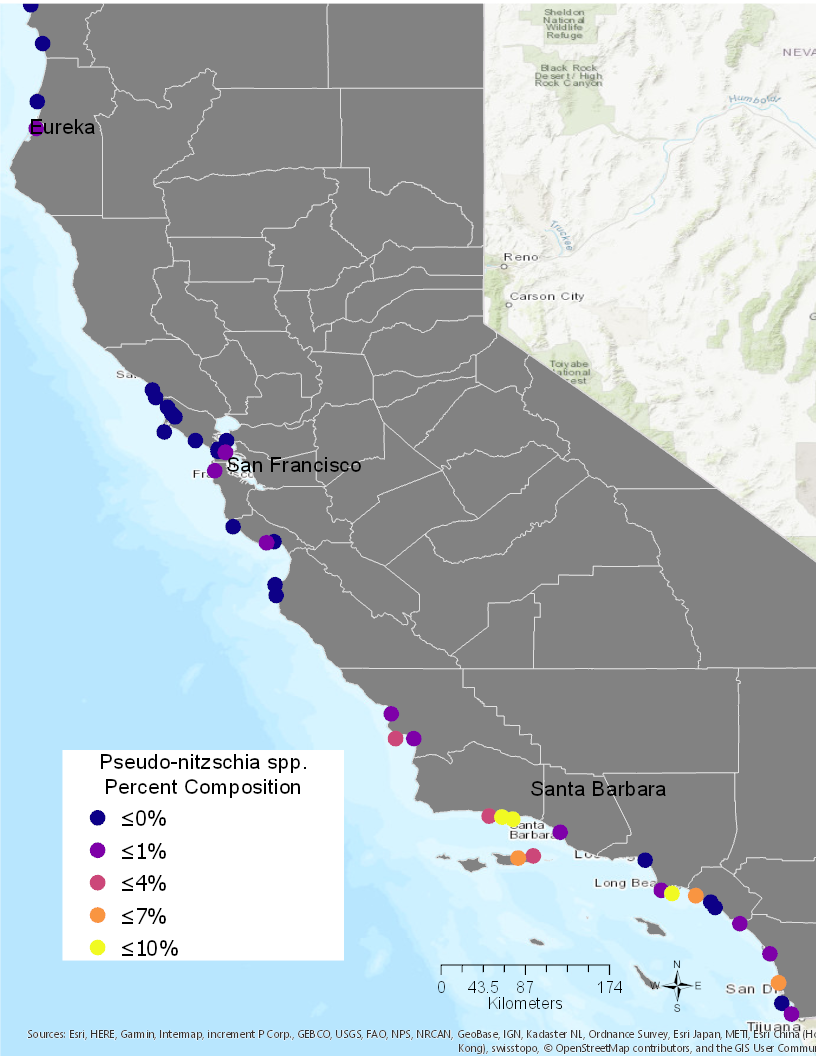
December 2018
Alexandrium spp.
Percent Composition
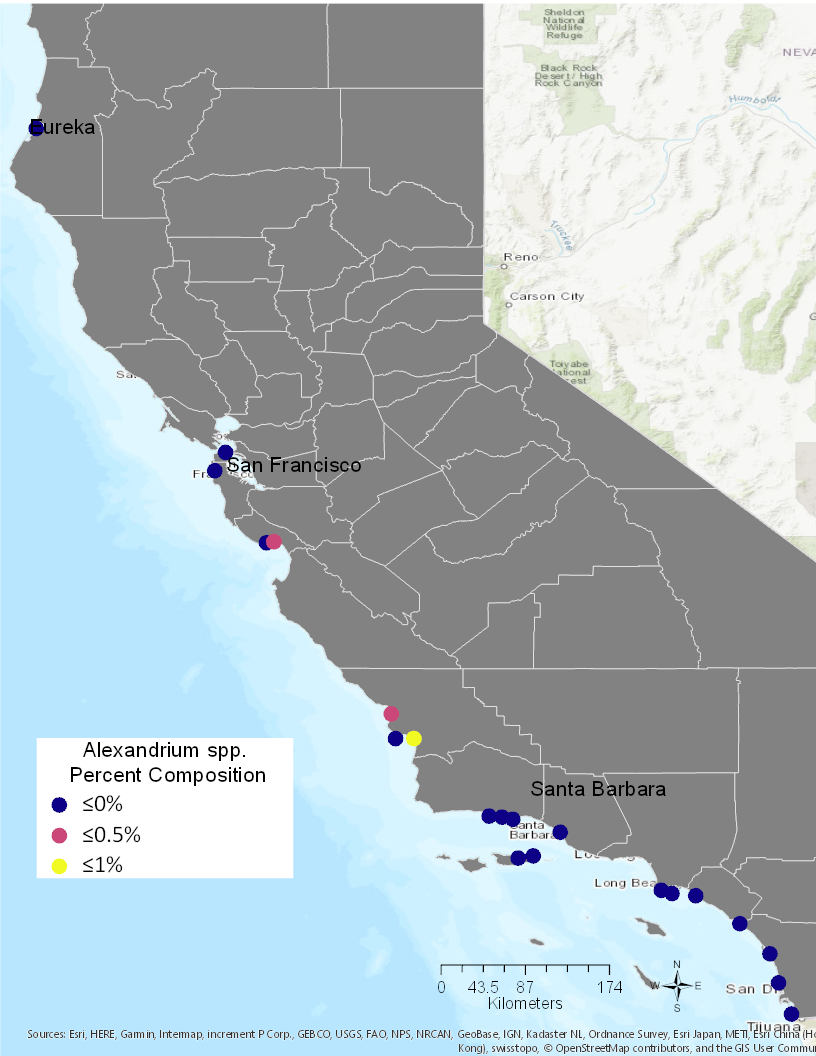
Central California Sea Lion Strandings from DA Toxicosis
The Marine Mammal Center (TMMC) in Sausalito, CA acts like an emergency room by working to rescue and rehabilitate sick and injured marine mammals, primarily California Sea Lions (Zalophus californianus). A total of 93 sea lion strandings presented with symptoms of domoic acid toxicosis in 2018, with 3 sea lion stranding in the month of December.
TMMC December sea lion strandings due to DA toxicosis occurred at the following locations:
- December 9th, 2018 - Moss Landing, Monterey
- December 18th, 2018 - Oceano Dunes, Oceano, San Luis Obispo
- December 20th, 2018 - Oceano Dunes, Oceano, San Luis Obispo
No DA toxicosis cases have been reported by SeaWorld or the Pacific Marine Mammal Center in December 2018.
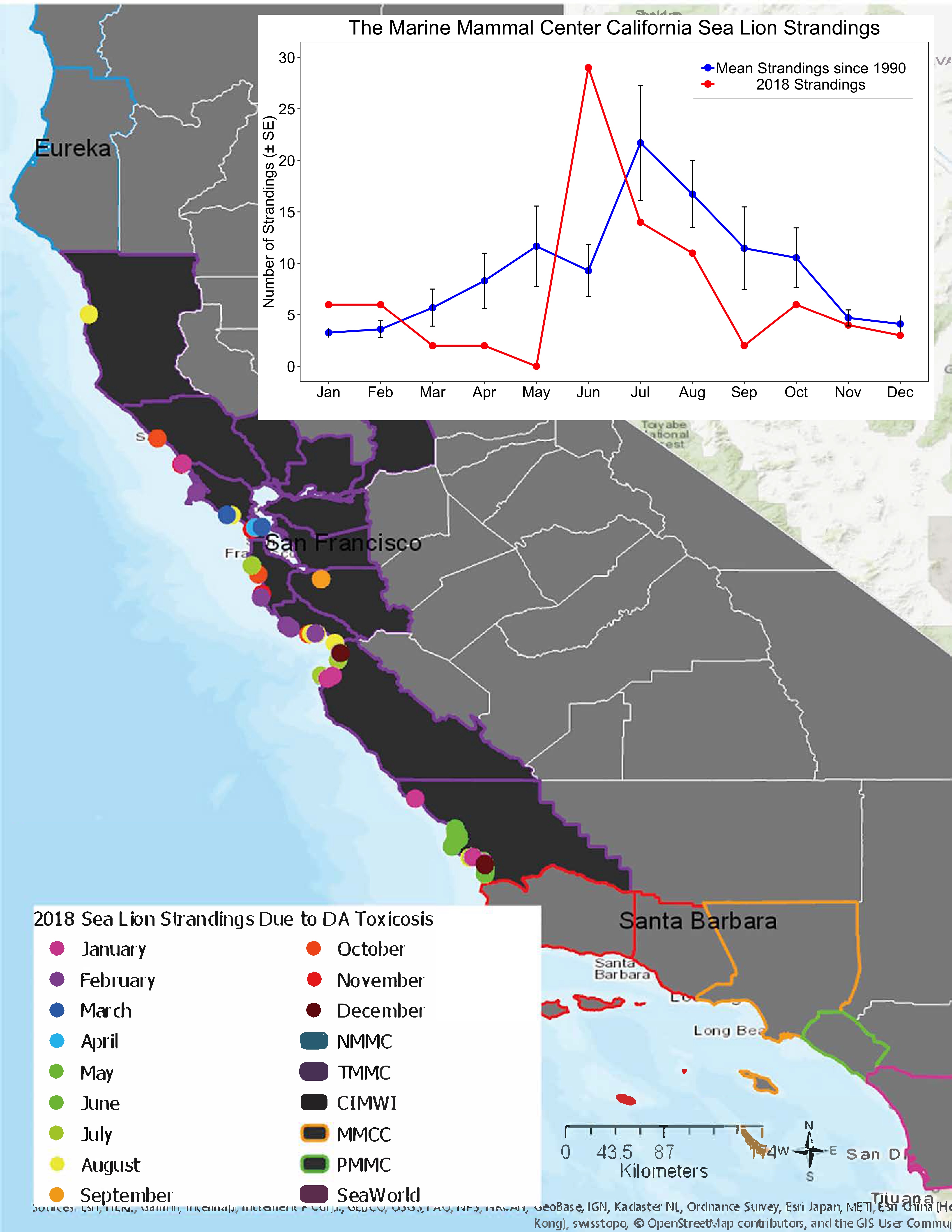
Who to call if you find a LIVE stranded marine mammal or sea turtle
Sea World of California (800) 541-7325
- San Diego County
Pacific Marine Mammal Center (949) 494-3050
- Orange County
Marine Animal Rescue (800) 399-4253 and California Wildlife Center (310) 458-9453
- Los Angeles County
Channel Islands Marine Wildlife Institute (805) 567-1505
- Santa Barbara County
- Ventura County
The Marine Mammal Center (415) 289-7325
- Alameda County
- Contra Costa County
- Marin County
- Mendocino County
- Monterey County
- Napa County
- Sacramento County
- San Francisco County
- San Luis Obispo
- San Mateo County
- Santa Cruz County
- Sonoma County
Northcoast Marine Mammal Center (707) 951-4722
- Del Norte County
- Humboldt County
